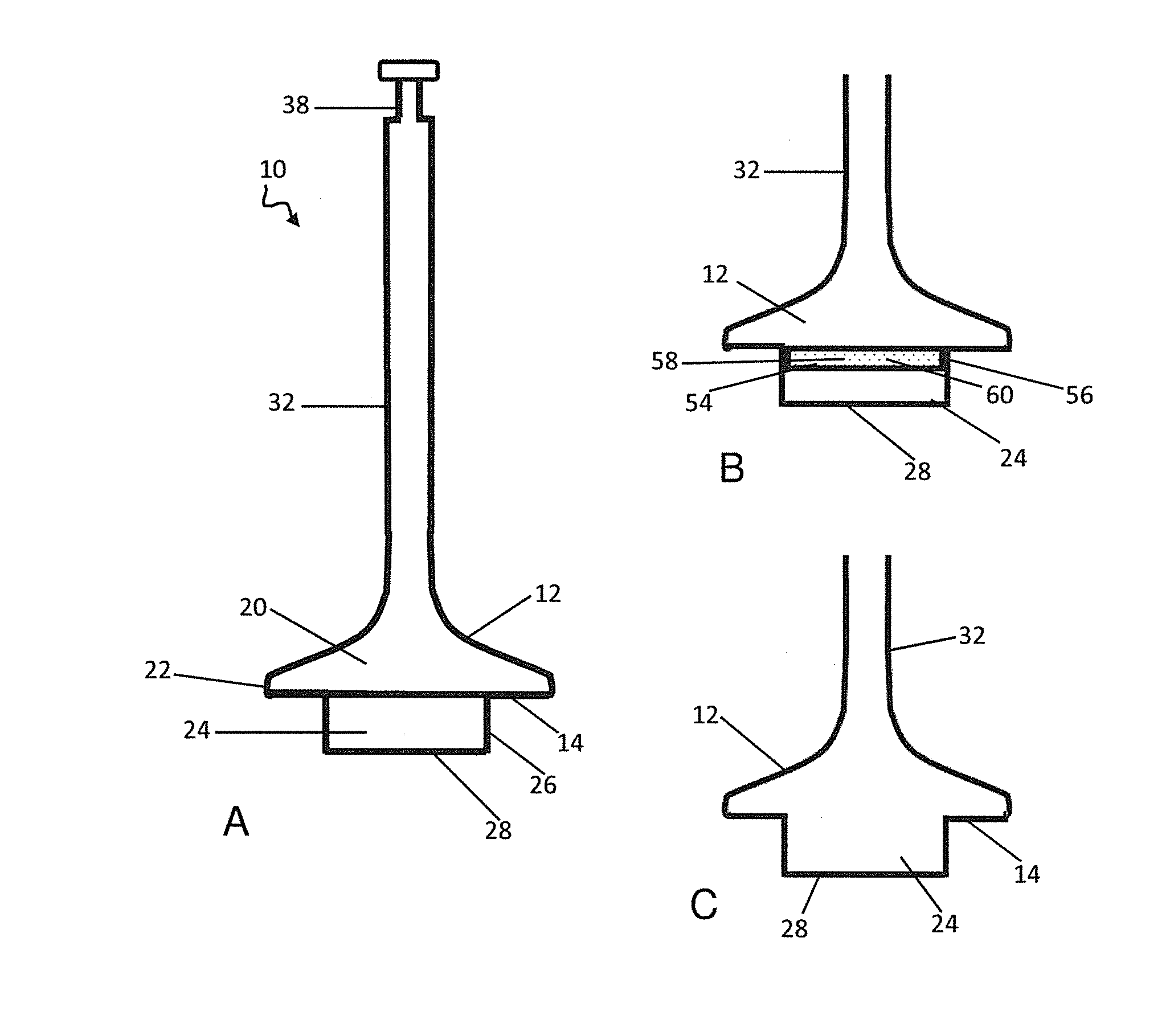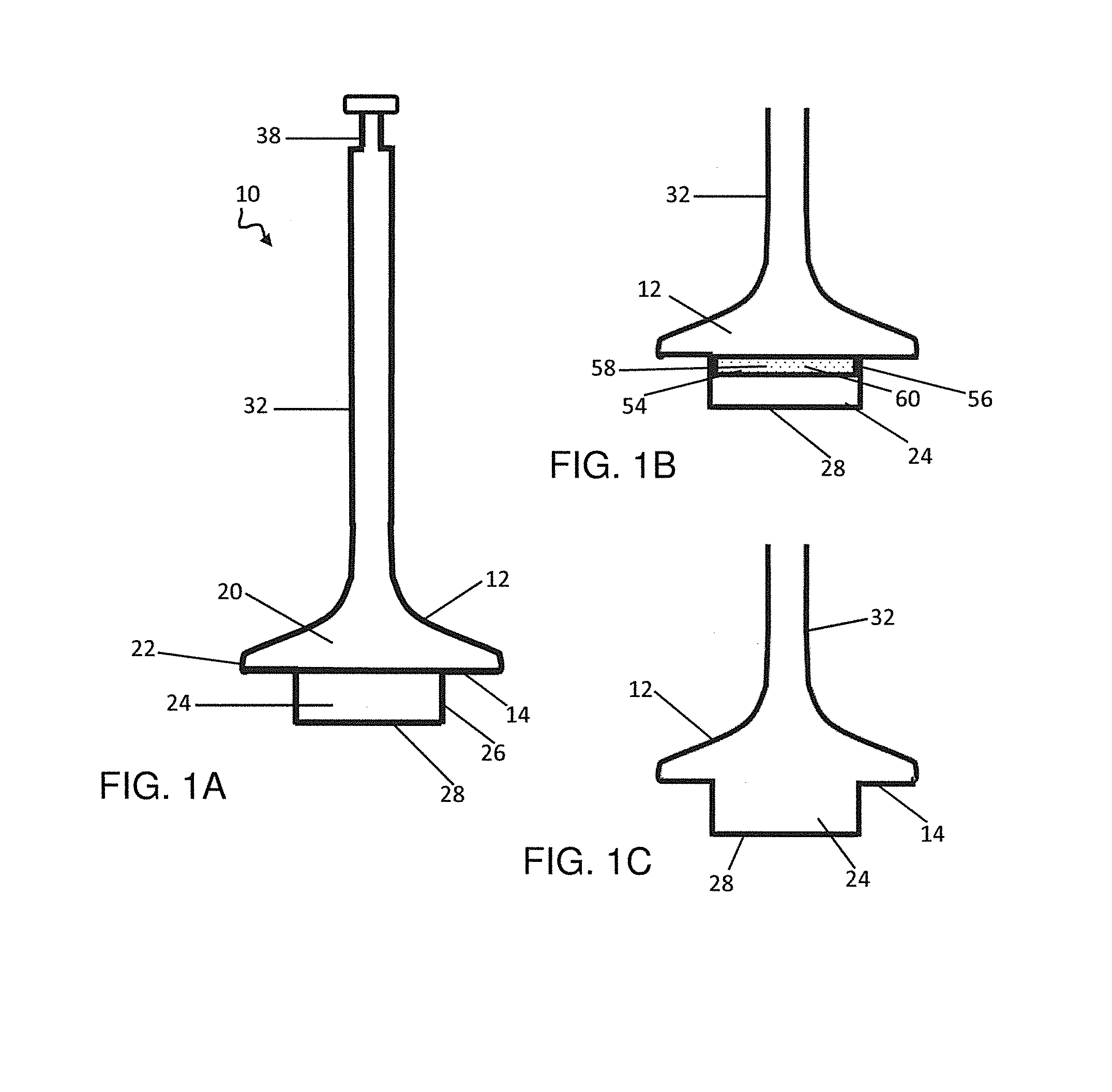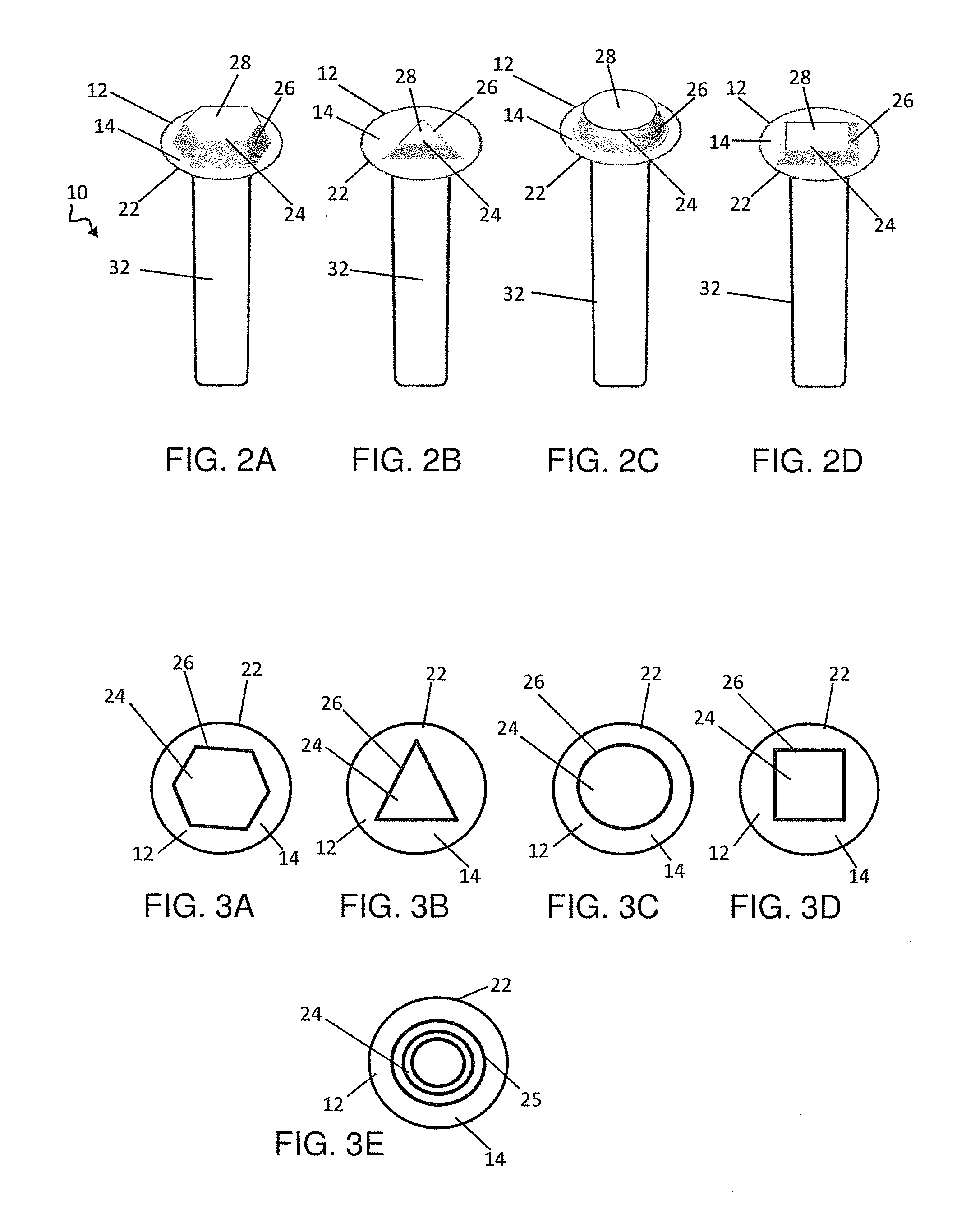Heat transferring engine valve for fuel conservation
- Summary
- Abstract
- Description
- Claims
- Application Information
AI Technical Summary
Benefits of technology
Problems solved by technology
Method used
Image
Examples
Embodiment Construction
[0025]A heat transferring gas exchange valve according to the present invention, generally shown at 10, includes a generally ovoid or circular valve head 12 including a lower combustion surface 14 directed toward the combustion chamber 16 of a cylinder 18, an opposite upper surface 20, a circumferential margin 22, and a heat transferring member 24 situated at the combustion surface 14 and extending toward the combustion chamber 16. The heat transferring member 24 includes at least one lateral side 26 and a face 28 directed toward the combustion chamber 16.
[0026]In the following description, the term “conventional valve” refers to any engine gas exchange valve that does not include a heat transferring member 26.
[0027]A exemplary heat transferring valve 10, as shown in FIGS. 1A and 6, is preferably a poppet valve reciprocatingly receivable within a valve guide 30 of a cylinder 18. The heat transferring valve 10 also includes support and mounting structures well known in engine valve a...
PUM
| Property | Measurement | Unit |
|---|---|---|
| Temperature | aaaaa | aaaaa |
| Shape | aaaaa | aaaaa |
| Perimeter | aaaaa | aaaaa |
Abstract
Description
Claims
Application Information
 Login to View More
Login to View More - R&D
- Intellectual Property
- Life Sciences
- Materials
- Tech Scout
- Unparalleled Data Quality
- Higher Quality Content
- 60% Fewer Hallucinations
Browse by: Latest US Patents, China's latest patents, Technical Efficacy Thesaurus, Application Domain, Technology Topic, Popular Technical Reports.
© 2025 PatSnap. All rights reserved.Legal|Privacy policy|Modern Slavery Act Transparency Statement|Sitemap|About US| Contact US: help@patsnap.com



